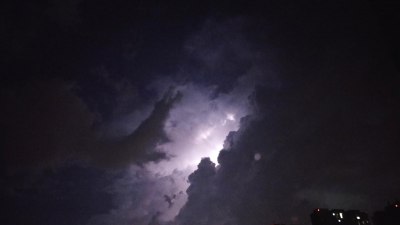Why Overcast Skies Make You Think You Need a Third Blanket
Explore the psychological and physiological reasons behind the urge for warmth on overcast days.

When the skies turn grey and the sunlight fades behind a blanket of clouds, many of us instinctively reach for an extra blanket. But what is it about overcast weather that makes us feel the need to bundle up? This article explores the psychological and physiological factors that contribute to this phenomenon and offers insights into our relationship with comfort and warmth.
The Psychological Impact of Weather
Weather has a profound effect on our mood and mental state. Studies have shown that overcast days can lead to feelings of sadness or lethargy, often referred to as Seasonal Affective Disorder (SAD). The lack of sunlight reduces serotonin production in the brain, which can lead to a decline in mood. This emotional response to gloomy weather may prompt a desire for increased comfort, leading to the instinct to grab a third blanket.
Comfort and Security
Blankets are often associated with feelings of safety and security. As children, we may have used blankets as protective layers against the unknown, seeking solace in their warmth. This association does not fade as we grow older; instead, it strengthens. On overcast days, the dim light and cool temperatures can evoke a sense of vulnerability, triggering a desire to retreat into the comforting embrace of a warm blanket.
The Physiology of Cold
From a physiological standpoint, cloudy days often bring cooler temperatures and higher humidity levels, which can make us feel colder than we might expect. According to scientific research, our bodies respond to cold by constricting blood vessels to preserve heat, which can lead to feelings of chilliness. If you are sitting indoors, the gloomy weather outside can create a perception of a cooler indoor environment, pushing you to seek out extra layers for warmth.
Impact of Modern Living
Today’s lifestyles often involve spending long hours indoors, whether it’s in a home office or a living room while binge-watching a favorite show. On overcast days, the lack of natural light can exacerbate feelings of tiredness and lethargy. This environment may further enhance the craving for warmth and coziness, which is met by snuggling under an extra blanket. The act of wrapping ourselves in blankets has a soothing effect, akin to a protective cocoon that shields us from the chilliness permeating the air.
Blankets as Emotional Anchors
Blankets can also serve as emotional anchors. In times of stress, anxiety, or sadness, we often seek comfort items that remind us of safety and warmth. This phenomenon is not just limited to heavy winter blankets; it can include lighter throws, quilts, and even weighted blankets known for their calming effects. The psychological relief that these items provide can be especially potent on overcast days when feelings of gloominess can creep in.
Seasonal Changes and Mood
As the seasons change, our moods can shift due to shorter days and reduced sunlight exposure. Research indicates that many people report feelings of depression or mood dips during fall and winter months. On a cloudy, overcast day, it's easy to become more acutely aware of these seasonal transitions, prompting a desire to seek comfort in the form of additional blankets. The seasonality of our emotional state can significantly impact our instinctual behaviors, guiding us toward warmth.
Mindful Comfort
Finding comfort on grey, overcast days is not a bad thing. It’s essential to listen to what our bodies and minds need. If a third blanket makes you feel better on a dark day, then it’s a small but impactful choice that can alter your mood positively. Being mindful of how different weather affects our emotional state can lead to healthier coping mechanisms. Instead of simply surrendering to the gloom, we can actively create environments that promote warmth and comfort, both physically and emotionally.
Creating a Cozy Environment
To enhance comfort levels on overcast days, consider creating a cozy environment. Soft lighting, warm drinks, and comfortable fabrics can transform your space into a haven. Invest in blankets that make you feel good, whether they be soft, fuzzy, or weighted. Surrounding yourself with these warm comforts not only raises your body temperature but also boosts your mood. A tactile and inviting atmosphere can combat the dreariness of an overcast day, making you less inclined to succumb to feelings of melancholy.
The Role of Routine
Our daily routines often dictate how we respond to the world around us. On sunny days, we might feel compelled to spend time outdoors, while cloudy days can lead to more indoor activities. Developing a routine that includes self-care practices during overcast weather can ease any seasonal dips in mood. For instance, lighting candles, reading a book, or practicing mindfulness can serve as excellent antidotes to any emotional turbulence brought on by gloomy days.
Overcast skies evoke a complex interplay of psychological and physiological responses. The instinct to reach for a third blanket stems from deep-seated associations with comfort, security, and warmth. Though our environments and moods can fluctuate depending on the weather, understanding these connections allows us to respond mindfully and intentionally to our needs. Whether it’s embracing the cocoon of warmth offered by blankets or creating a cozy atmosphere, learning to appreciate the small comforts during grey days can transform your experience from dreary to inviting.











